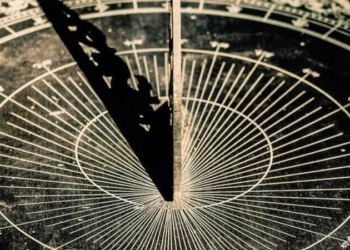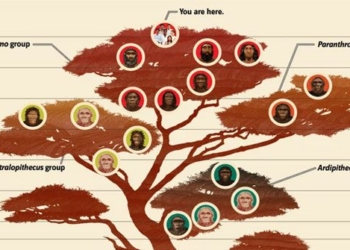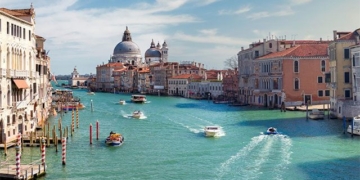Wood is a relatively hard material, but under the right conditions and with enough time, it can transform into “petrified wood” – a substance even harder than stone.
Petrified wood, in the literal sense, means wood that has been “turned to stone” – derived from Greek. In petrified wood, the biological fibers and structures typically found in a tree trunk are replaced by minerals such as opal or quartz. This makes petrified wood a unique and incredibly beautiful type of fossil, but the conditions required for wood to become petrified are equally special.


Petrified wood literally means wood turned to stone.
Fossils typically occur in sedimentary rocks because the processes that create igneous and metamorphic rocks are not suitable for fossil formation and preservation. Most fossils are formed from the hard parts (like bones) of animals. However, the hard parts of bones are minerals themselves, while wood is not.
The trunk of a tree is the part most likely to become petrified. A tree trunk contains various components, but 95% of the dry weight of wood is made up of holocellulose and lignin. Holocellulose decomposes slowly, but lignin decomposes much more slowly. Additionally, bacteria can only break down lignin in the presence of oxygen.
Thus, for wood to become petrified, it must be preserved in an oxygen-free environment. In practice, wood is preserved from decay when it is quickly buried in mud or water-saturated sediments, or volcanic ash. These environments protect lignin from decomposition, allowing it to gradually become petrified.

The trunk of a tree is the part most likely to become petrified.
Many important geological processes are triggered by water, and the process of wood becoming petrified is no exception. Fossilized wood is formed through a process called permineralization, and water is the primary agent here.
Permineralization occurs when materials from plants or bones are soaked in water and gradually replaced by minerals. This often happens when water fills the cells of the tissue and carries minerals along. The most common mineral for this process is quartz, although rarer minerals can also play a role.
Underground, where this process occurs, water contains not just two parts hydrogen and one part oxygen – it is rich in dissolved minerals. The minerals in the water gradually replace the original tissue; bit by bit, molecule by molecule, the biological tissue transforms into minerals. This gradual replacement is also why many types of petrified wood retain so many original details of their structures.
Permineralization can also preserve soft tissues, in addition to hard tissues, making it far more interesting compared to bone fossils.

Petrified wood is formed through a process called permineralization.
When thinking about petrified wood, many may immediately think of coal – but contrary to popular belief, coal is not actually petrified wood.
Coal is formed from plant material, and most coal in the world is derived from non-woody plants under the influence of fungi and bacteria.
The oldest type of petrified wood has an age comparable to woody plants, dating back to the Devonian period, around 390 million years ago, when woody plants first appeared on land. Scientists have found petrified wood dating from the Devonian to modern times. However, certain periods (and locations) also created better conditions for the formation of petrified wood.
For example, the warm, super-monsoonal climate (such as the Carboniferous-Permian period, from about 360 million years ago to 300 million years ago) seems to have produced a large amount of petrified wood. However, what truly drives the process of petrified wood formation is volcanic eruptions.
Volcanic eruptions, especially those that produce a lot of ash, create the perfect conditions for the permineralization process. In certain areas, such as the petrified forest in Yellowstone, 27 successive forest ecosystems have been buried by subsequent eruptions.
Petrified wood can be considered a natural wonder, but while many love it for its stunning appearance, it is particularly fascinating to researchers.

Petrified wood can be considered a natural wonder.
The environment that creates petrified wood is also one of the best conditions for preserving other fossil forms – which is why petrified forests are the primary environment for searching for other fossils. For instance, in 2020, geologists studying a petrified forest area in eastern Arizona discovered a new species of reptile, the Skybalonyx skapter, which is 220 million years old.
Fossils from other petrified forests have helped researchers gain a better understanding of the biodiversity and climate of these areas. Researchers can look for signs of abundant rainfall or drought reflected in petrified wood, and they may even find clues related to pest species or potential wildfires.
In fact, researchers even want to use petrified wood to study Doggerland, the land currently submerged that connected England to continental Europe.
It can take millions of years for wood to become petrified, but scientists are also increasingly deepening their understanding of recreating this process in the laboratory, which may help us better understand this marvelous fossil.





















































